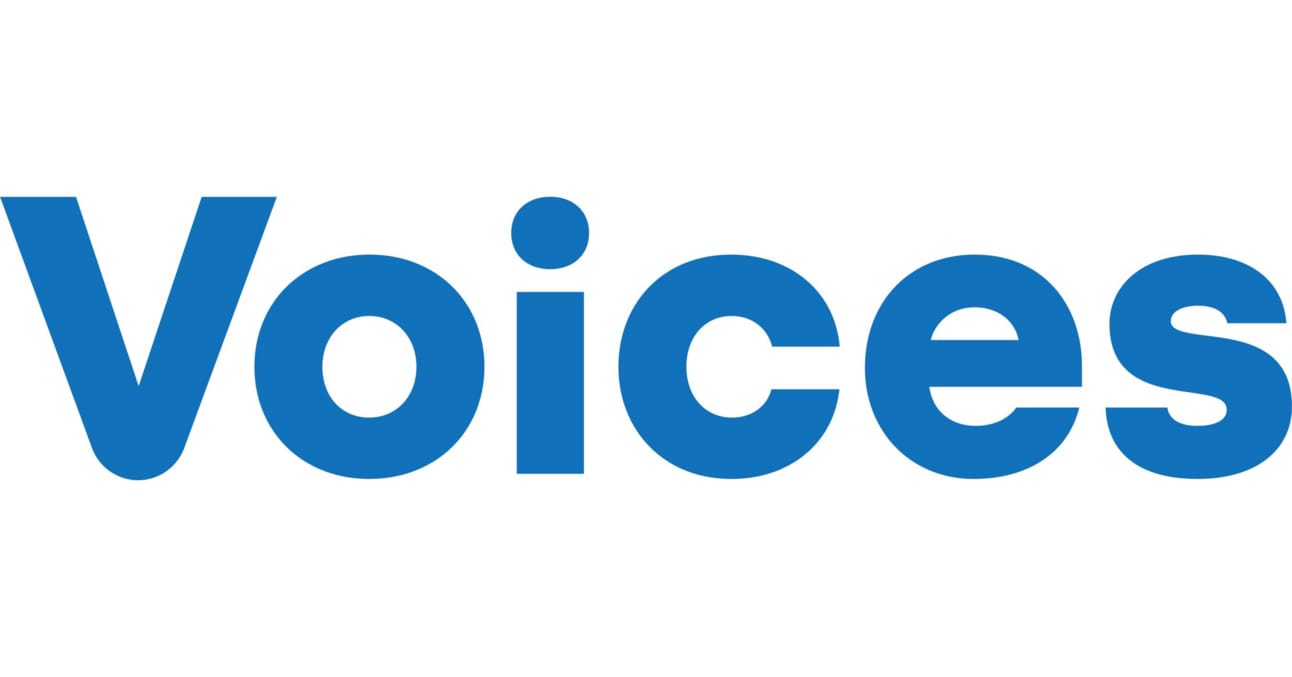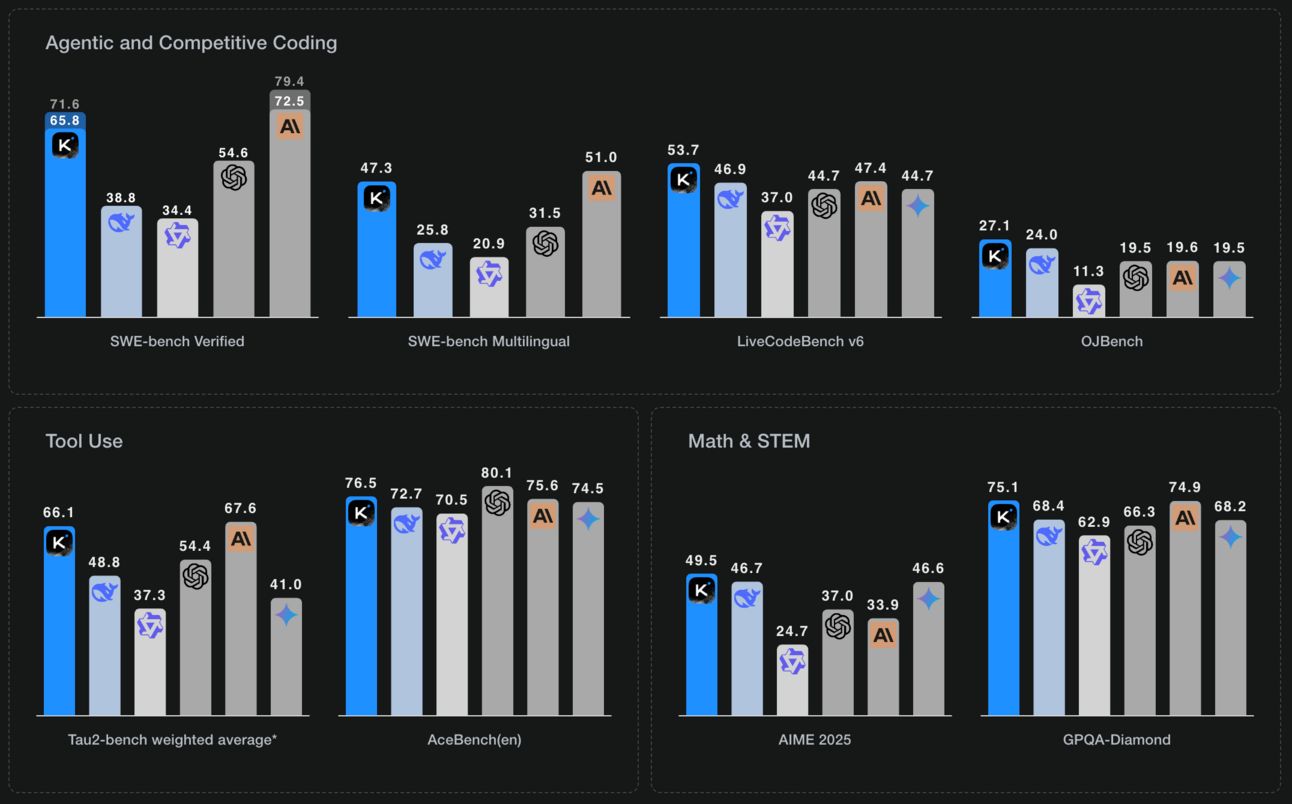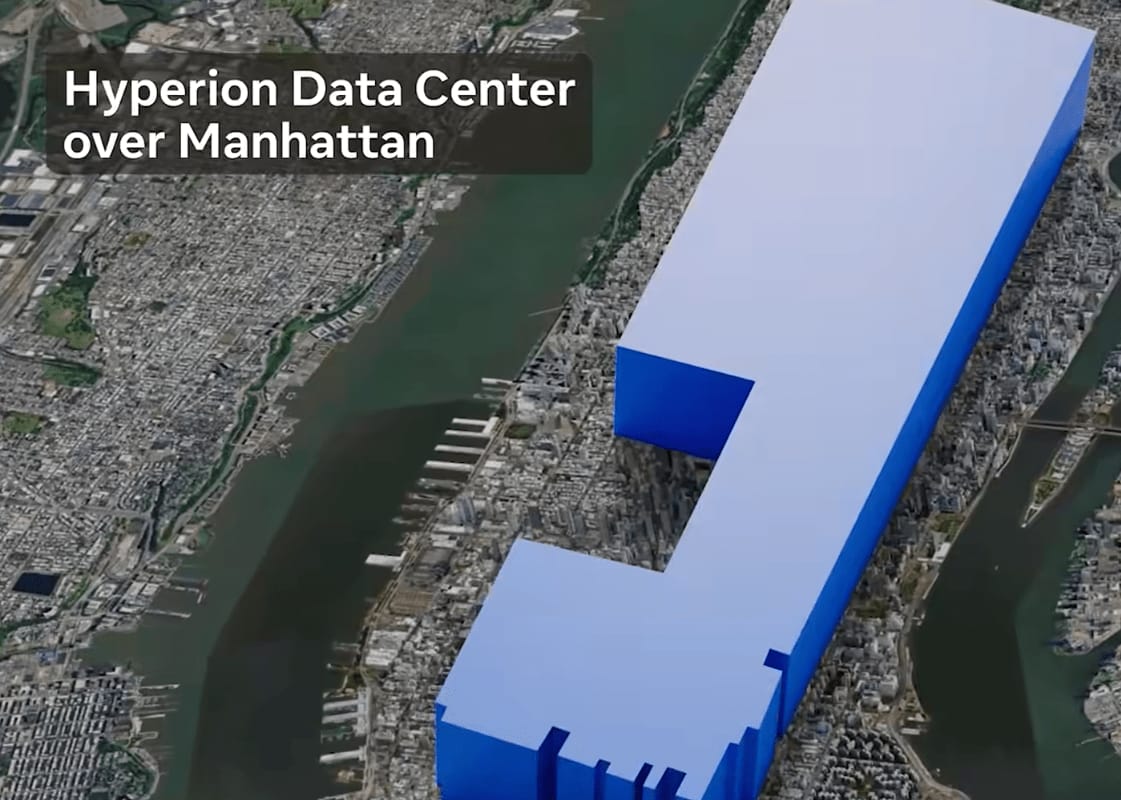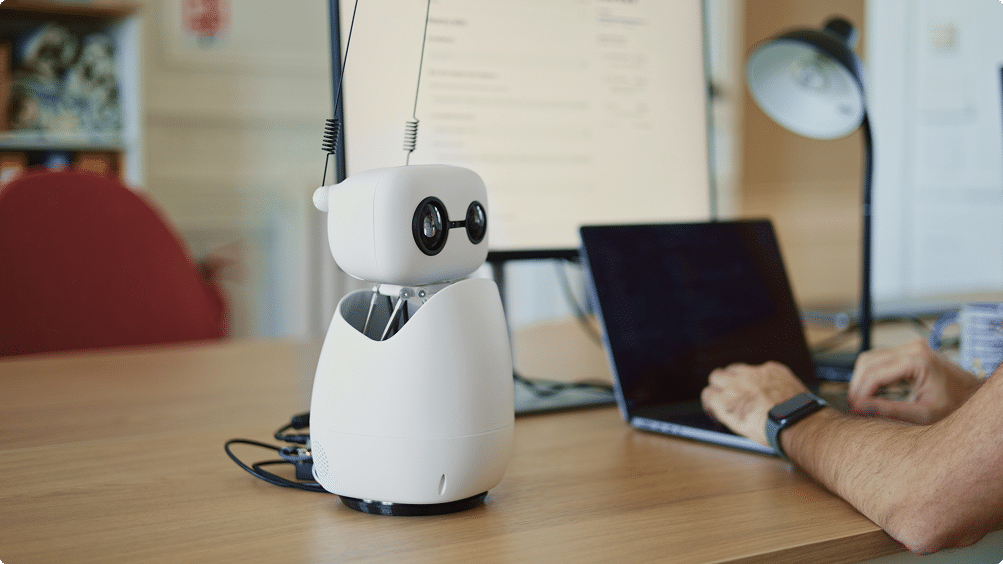- AI Valley
- Posts
- Kimi K2: The DeepSeek moment for agentic coding
Kimi K2: The DeepSeek moment for agentic coding
PLUS: Meta goes all in Superintelligence
Together with
Howdy! It’s Barsee again.
Happy Tuesday, AI family, and welcome back to AI Valley.
Today’s climb through the Valley reveals:
Kimi K2 outperforms GPT-4 in key benchmarks
Meta is building a 5GW AI data center called Hyperion
xAI launches Grok AI companions
Hugging Face just launched a $299 robot
Plus trending AI tools, posts, and resources
Let’s dive into the Valley of AI…
VOICES AI
Voice AI is becoming the next big step in technology. To build Voice AI that can actually hold natural conversations, models need a huge amount of high-quality voice data. But finding voice data that’s collected ethically isn’t easy.
That’s why Voices.com is introducing something new.
🗓 When: July 17 at 1 PM ET
📍 Where: Online
Here’s what you’ll see:
How voice data is gathered, organized, and put to use
A live demo of our Voice Data solution
Stories from the people who provide and use the data
A look at where voice technology is headed next
Register now to be part of the launch.
*This is sponsored
PEAK OF THE DAY
Kimi K2: The DeepSeek moment for agentic coding 🤖
The DeepSeek R1 release earlier this year was more of a prequel than a one-off fluke in the trajectory of AI. Last week, a Chinese startup named Moonshot AI dropped Kimi K2, an open model that is permissively licensed and competitive with leading frontier models in the U.S.
Here's everything you need to know:
Kimi K2 is the largest major open weights model yet (1T total parameters with 32B active)
Outperforms Claude 3.5 Sonnet and GPT-4.1 on coding/math benchmarks
Trained on 15.5T tokens at a fraction of most model costs (~$5M like DeepSeek V3)
Very similar to DeepSeek architecture
Already surpassing Grok 4 in API usage on OpenRouter
How is China pulling ahead in open-source AI?
Third Chinese org (after DeepSeek/Qwen) to beat Meta's best open-source models
Uses revolutionary Muon optimizer for stable trillion-parameter training
Permissively licensed while Western labs delay releases (OpenAI's postponed open model)
Specializes in "non-thinking" agentic tasks, which execute rather than debate
Why should Silicon Valley worry?
Proves algorithmic gains > compute spending (matches $100M models with $5M training)
The cost is only 20% of Claude 3.5
Technical report expected to reveal more efficiency breakthroughs
What can it actually do better?
97.4% on MATH-500 vs GPT-4.1's 92.4%
53.7% on LiveCodeBench vs GPT-4.1's 44.7%
Handles 17+ tool calls for complex workflows
Already powering Kimi chatbot's 100M+ Chinese users
Why it matters:
Moonshot's Kimi K2 represents the first open-source model that truly challenges proprietary leaders in both capability and efficiency. By solving key technical hurdles like training stability while maintaining low costs, they've created a blueprint for how smaller players can compete with AI giants. The model's strong coding and agentic abilities address enterprise needs better than conversational chatbots, potentially reshaping how businesses adopt AI. This release accelerates the industry's inevitable shift toward open, affordable AI systems that anyone can customize and deploy.
THROUGH THE VALLEY
Meta is building a massive new data center in Louisiana called Hyperion, designed to eventually use up to 5 gigawatts of power (more than some small countries consume). It’s part of Meta’s push to scale its AI systems and develop what it calls “superintelligence.” This comes right after announcing Prometheus, another AI facility launching in 2026 with 1 gigawatt capacity. Both centers are part of a plan to create several “supercluster” data hubs using Meta’s custom chips and networking tech. The company expects to spend hundreds of billions over the next decade on AI infrastructure, research, and talent.
SpaceX is reportedly planning to invest $2 billion in Elon Musk’s AI startup xAI, according to the Wall Street Journal. The deal would be part of a larger $5 billion equity raise alongside $5 billion in debt, led by Morgan Stanley. This marks SpaceX’s first investment in xAI and one of its largest bets on another company. SpaceX already uses xAI’s chatbot Grok for Starlink customer support and is exploring more collaborations. Musk has a history of linking his companies, recently merging xAI with X and planning to bring Grok into Tesla vehicles.
Google has made a major move in the AI talent wars by bringing in Varun Mohan, co-founder and CEO of coding startup Windsurf, along with key members of his R&D team. As part of the deal, Google will pay $2.4 billion for licensing fees and compensation, gaining a nonexclusive license to Windsurf’s technology while the startup remains free to work with others. This comes after Windsurf’s $3 billion acquisition talks with OpenAI fell through. The move strengthens Google DeepMind’s push into agentic coding, as Big Tech companies race to secure top AI talent and tools.
Cognition, the company behind the AI coding agent Devin, has acquired Windsurf’s core product, IP, brand, and team of 250 people. The deal follows a chaotic weekend where OpenAI nearly bought Windsurf for $3 billion, but talks collapsed. Google then stepped in and hired Windsurf’s CEO and co-founder in a separate $2.4 billion licensing deal. Windsurf brings in $82 million in yearly revenue and has built tools like Cascade and Tab, which help developers write and manage code. These tools will now be folded into Devin. Cognition says all Windsurf employees will keep their equity, with no vesting cliffs or delays.
xAI has launched AI companions for SuperGrok subscribers, featuring animated 3D avatars powered by its Grok model that users can chat with in real-time using voice. The companions include characters like Ani, a flirty anime persona, and Bad Rudi, a playful red panda, with more avatars on the way. Users can unlock NSFW options and other features by leveling up their relationship, adding a gamified layer to interactions. The launch follows recent backlash over offensive Grok outputs, raising fresh concerns about emotional AI relationships and the risks of pushing explicit features so soon after safety issues.
Hugging Face has unveiled Reachy Mini, a $299 desktop robot aimed at making robotics accessible to millions of developers. The 11-inch humanoid device can sit on a desk and is fully programmable, integrating directly with Hugging Face’s AI model hub. Built after acquiring Pollen Robotics, it’s part of their push to democratize robotics and move away from the closed, high-cost systems dominating the industry. Developers can use Python to build apps or share creations on Hugging Face Spaces. By open-sourcing hardware designs and software, the company hopes to spark a wave of affordable, community-driven innovation.
TRENDING TOOLS
Kimi K2 - Built for code & agentic tasks
Reachy Mini - A new open-source robot for your desk
FLUX - Transform any image without writing a single prompt
Basic Memory - AI conversations that build lasting knowledge over time
BrowserOS - An open-source agentic web browser
Opencode - Your terminal's AI agent, with any model you want
LLM SEO Trends - Monitor 2200+ live trends with real search volumes
Ponder - Explore, connect, and evolve your thinking without switching tools
THINK PIECES / BRAIN BOOST
My response to AI 2027
How to use AI to reclaim deep work
How Nvidia became the world's first $4 trillion company
Study warns of ‘significant risks’ in using AI therapy chatbots
xAI shares Grok’s internal prompts on GitHub
THE VALLEY GEMS
What’s trending on social today:
The new meta for building anything in July 2025:
- Planning: Grok-4 to make TDD file
- Coding: Sonnet-4 and Gemini 2.5
- IDE: Claude Code or Cursor
- Frontend: React in Lovable
- Backend: n8n if you can’t code, Python & FastAPI if you can
- AI Orchestration: LangChain
-— vas (@vasumanmoza)
2:29 PM • Jul 14, 2025
A Reddit user deposited $400 into Robinhood, then let ChatGPT pick option trades. 100% win reate over 10 days.
He uploads spreadsheets and screenshots with detailed fundamentals, options chains, technical indicators, and macro data, then tells each model to filter that
— Rohan Paul (@rohanpaul_ai)
5:23 AM • Jul 13, 2025
Dynamics Lab has unveiled Mirage, an AI-driven, generative game engine prototype - the world's first real-time “world model engine” that allows video game worlds to be created and modified live
Some examples
— Chubby♨️ (@kimmonismus)
9:02 PM • Jul 12, 2025
🇨🇳 A team of construction workers in China operating excavators remotely.
Grueling blue-collar work is now a cushy air-conditioned office job.
— Dott. Orikron 🇵🇹 (@orikron)
7:01 PM • Jul 13, 2025
THAT’S ALL FOR TODAY
Thank you for reading today’s edition. That’s all for today’s issue.

💡 Help me get better and suggest new ideas at [email protected] or @heyBarsee
👍️ New reader? Subscribe here
Thanks for being here.
HOW WAS TODAY'S NEWSLETTER |
REACH 100K+ READERS
Acquire new customers and drive revenue by partnering with us
Sponsor AI Valley and reach over 100,000+ entrepreneurs, founders, software engineers, investors, etc.
If you’re interested in sponsoring us, email [email protected] with the subject “AI Valley Ads”.






